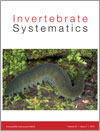A revised molecular phylogeny of the genus Aleochara Gravenhorst is presented. The dataset comprised partial mitochondrial cytochrome c oxidase I (COI) (1373 bp), COII (577 bp), and the complete sequences of tRNA leucine (71 bp) between them, for 56 Aleochara species and 8 outgroups. We added 15 populations of 8 coastal species: A. fucicola Sharp, A. littoralis (Mäklin), A. nubis (Assing), A. puetzi (Assing), A. squalithorax Sharp, A. sulcicollis Mannerheim, A. trisulcata Weise and A. zerchei (Assing). All phylogenetic analyses strongly supported the monophyly of the genus Aleochara, a curtula clade, a bilineata clade, and four other clades (A–D, described later) containing the coastal species. Based on the phylogenies, we hypothesise that there are four independent origins of specialisation to a coastal habitat in the genus Aleochara (clades A–D). Clade A (Emplenota and Triochara), with nine species, is the most successful lineage in terms of species number and broad distribution range.
How to translate text using browser tools
24 May 2013
Molecular phylogeny reveals multiple origins of seashore colonisation in the genus Aleochara Gravenhorst (Coleoptera : Staphylinidae : Aleocharinae)
Jeong-Hun Song,
Kee-Jeong Ahn
ACCESS THE FULL ARTICLE
<
Previous Article
|

Invertebrate Systematics
Vol. 27 • No. 2
May 2013
Vol. 27 • No. 2
May 2013




